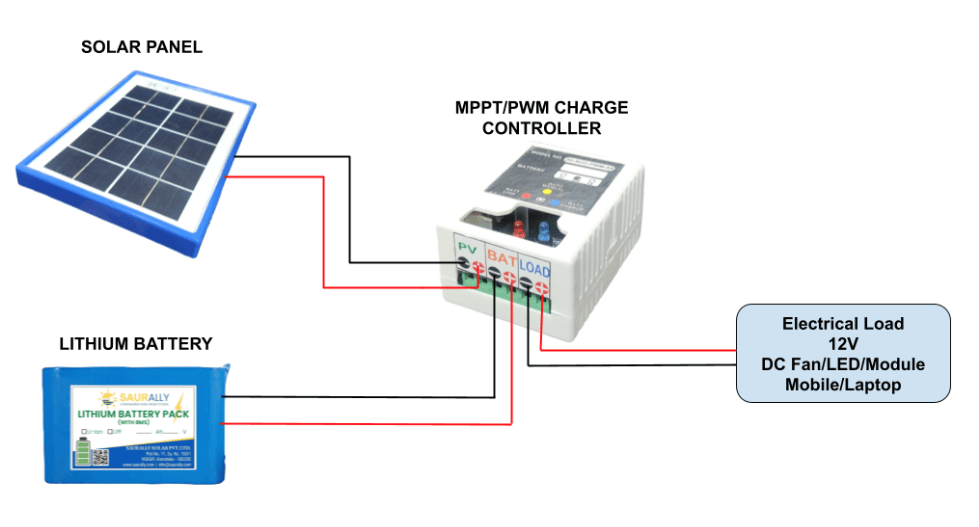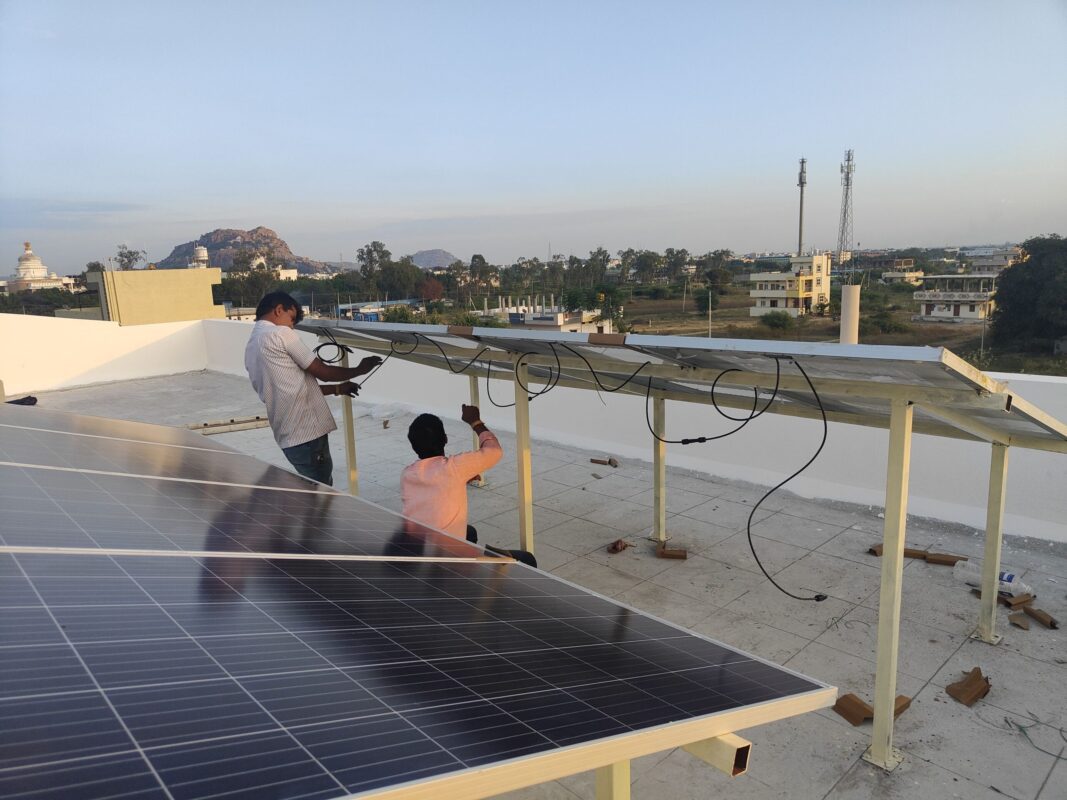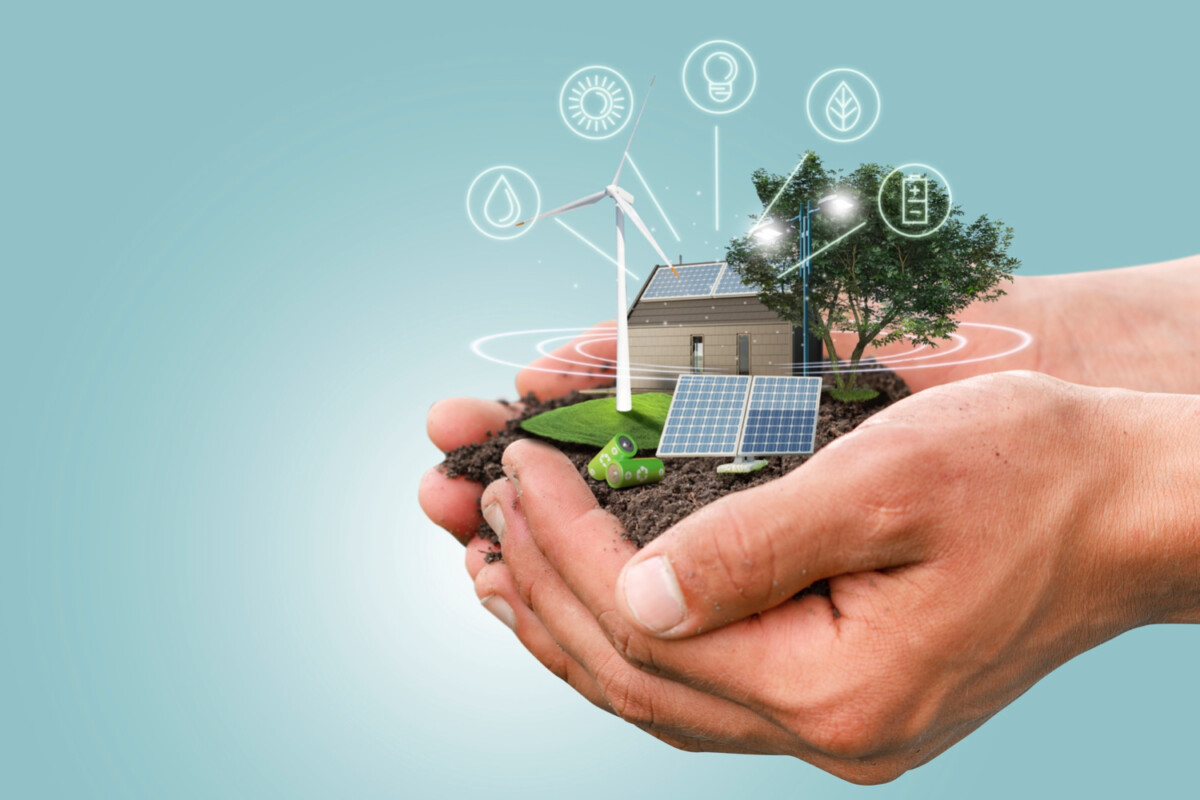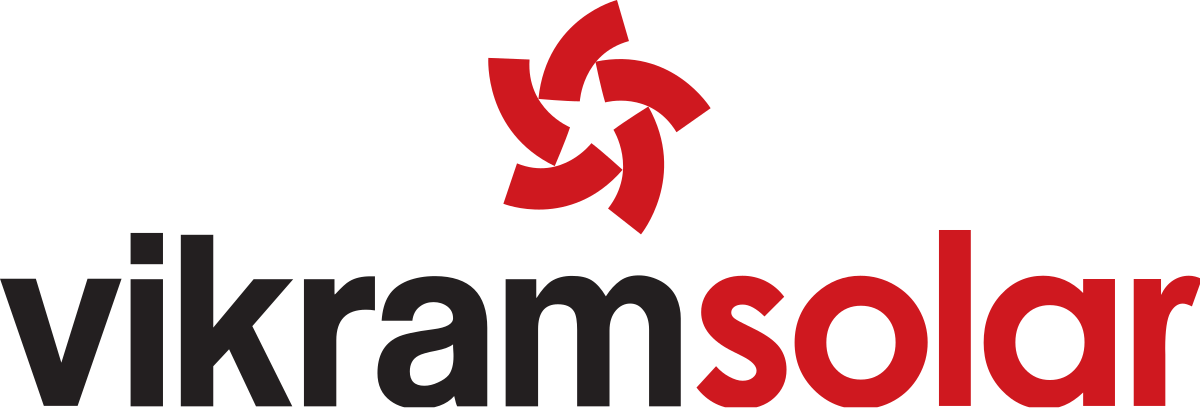Blog
Guide: Connecting a Solar Panel with a 12V Controller, Lithium Battery and Load

Harnessing solar energy through solar panels is becoming increasingly popular for both residential and commercial applications. A crucial part of any solar setup is the charge controller, especially when dealing with a 12V system. The charge controller ensures the safe and efficient charging of batteries while protecting them from overcharging or excessive discharge. This tutorial will walk you through the process of connecting a solar panel to a 12V charge controller and then to a load, such as lights or small appliances.
Materials Needed
- Solar panel(s) rated for 12V output – (Buy Now)
- 12V charge controller (PWM or MPPT, depending on your preference and system requirements) – (Buy Now)
- 12V deep cycle battery (Lithium Battery Pack) – – (Buy Now)
- Wires and cables (appropriately sized for your system)
- Wire cutters/strippers
- Screwdriver or wrench (for connecting terminals
- Load (lights, fans, small appliances, etc.) – – (Buy Now)
Step 1: Positioning the Components
Choose a suitable location for your solar panel where it receives maximum sunlight throughout the day. Place the charge controller near the battery or load, preferably in a well-ventilated area. Ensure that the battery and load are close to each other to minimize wiring distance and losses.
Step 2: Connecting the Charge Controller to the Battery
Identify the positive and negative terminals on both the charge controller and the lithium battery. Connect the positive (+) wire from the charge controller to the positive terminal (+) on the lithium battery. Connect the negative (-) wire from the charge controller to the negative terminal (-) on the lithium battery. Ensure that the charge controller is compatible with lithium batteries and is configured accordingly. Some charge controllers have specific settings or modes for lithium battery charging, such as lithium iron phosphate (LiFePO4) batteries or lithium-ion batteries. Consult the manufacturer’s instructions for proper configuration.
Step3: Connecting the Solar Panel to the Charge Controller
Identify the positive and negative terminals on both the solar panel and the charge controller. Connect the positive (+) wire from the solar panel to the positive terminal (+) on the charge controller. Connect the negative (-) wire from the solar panel to the negative terminal (-) on the charge controller. Ensure secure connections and use appropriate cable glands or waterproof connectors if the system is exposed to weather elements.
By integrating a lithium battery into your solar power system, you can enhance energy storage capacity and efficiency, allowing for greater flexibility and reliability in off-grid applications. However, it’s essential to understand and follow the specific requirements and precautions associated with lithium battery technology to ensure safe and effective operation.
Step 4: Connecting the Load to the Charge Controller
Identify the load terminals on the charge controller. Connect the positive (+) wire from the load to the positive load terminal on the charge controller. Connect the negative (-) wire from the load to the negative load terminal on the charge controller. Ensure that the load’s power consumption does not exceed the rating of the charge controller and is compatible with the voltage of the lithium battery.
Step 5: Testing and Operation
- Once all connections are made, verify that everything is securely connected and there are no loose wires.
- Turn on the load (if applicable) and monitor the charge controller to ensure it’s functioning correctly.
- Observe the battery charging status, load operation, and overall system performance.
- Regularly monitor the lithium battery’s state of charge and voltage levels to ensure safe and efficient operation. Lithium batteries have specific voltage ranges for charging and discharging, and exceeding these limits can lead to damage or safety hazards.
- If applicable, implement additional safety measures such as overcharge protection, temperature monitoring, and proper ventilation for the lithium battery.
- Adhere to manufacturer recommendations and best practices for handling and maintaining lithium batteries to maximize their lifespan and safety.

By following these steps, you can successfully connect a solar panel with a 12V charge controller and load, creating a functional solar power system. Remember to prioritize safety and proper wiring techniques throughout the installation process. With a properly configured system, you can enjoy reliable and renewable energy for various applications.
Applications:
This setup is commonly applied in small-scale off-grid solar power systems. These systems are typically used in remote locations where access to the main power grid is limited or nonexistent. Some common applications include:
- HouseHold Appliances : This system can be connected to Mobiles, WiFi Routers and Laptops to enhance your work from home experience with uninterrupted disconnects.
- Solar Cameras: Surveillance cameras can be connected in this fashion to gain security and surveillance ability in remote places like farms, hiking trails, gardens etc.
- Remote Telemetry devices : Telemetry devices to monitor air quality, pollution (Noise and Air), Humidity etc can be connected to solar panels, battery and charge controllers. These devices will run without human intervention or external power supply. It is quite useful in monitoring urban and rural air space. Such systems are extensively used by local municipal bodies and rural authorities to monitor their region.
- Off Grid GREEN PC : A low powered computer using raspberry pi, monitor and keyboard can be connected to solar panels along with battery and charge controller to provide computing facilities to schools and colleges for educational purposes. Such systems are quite helpful for schools in rural areas with inconsistent power supply from the grid. It is implemented by certain private companies in collaboration with NGOs and Govt. Depts.
LINK to Green PC: Green PCs Light Up Ashram School: Rural Digital Education (India) | NEP | PM Shri Schools | Rotary
- Remote Cabins or Vacation Homes: Solar power systems can provide electricity for lighting, small appliances, and charging electronic devices in cabins or vacation homes located in areas without grid access.
- RVs, Campers, and Boats: Solar panels coupled with charge controllers and batteries are popular for providing power to recreational vehicles, campers, and boats, allowing for extended stays off-grid without relying solely on generators or shore power. These systems also help fisherman, campers to contact emergency services in case of an accident.
- Engineering Projects: Solar panels along with Lithium batteries and charge controllers are used to run multiple loads such as GSM/GPS Modules, Remote telemetry devices placed in offgrid locations. The entire set up can be easily used by project groups to learn and display their solar application knowledge
- Emergency Services Kiosk: Telephone systems installed in remote jungles and deserts are powered by solar power systems. These are useful to connect with emergency services in case of an accident or a calamity. Quite popular in forests, hiking trails, beaches etc.
- HAM Radios: Solar power systems are employed to power remote telecommunications equipment, such as HAM Radios, radio towers, weather stations, and monitoring devices, ensuring continuous operation without grid dependency.
- Animal Tracking and Monitoring : Migration, health monitoring of wild animals can be tracked using IR cameras, motion sensors and visual cameras in the deep forests. These devices are powered by solar solar and lithium battery to work 24×7.
- Solar Street light & Traffic lights: Solar-powered lighting systems are widely used for illuminating the streets and controlling traffic. These can be programmed to turn on upon sunset and have multiple times to regulate traffic.
- Environmental Monitoring: Solar energy is utilized to power environmental monitoring stations, wildlife tracking devices, and research equipment in remote locations, facilitating long-term data collection and research.
- Off-Grid Workshops or Sheds: Solar power systems can provide electricity for tools, lighting, and other equipment in off-grid workshops, sheds, or construction sites where grid connection is unavailable or expensive.
Conclusion
Overall, these applications demonstrate the versatility and reliability of off-grid solar power systems, offering sustainable energy solutions in diverse settings and scenarios. These are just a tip of the iceberg. People use such systems in a variety of remote off grid applications. If you have any interesting ideas, comment here for others to know!













